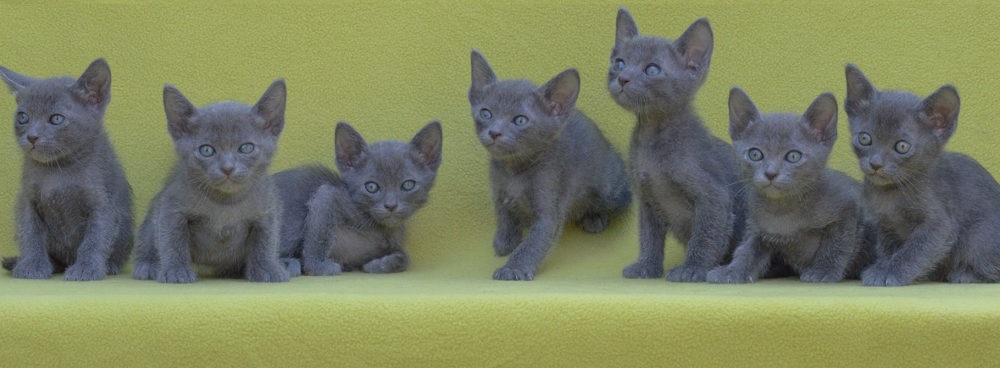Race description
| Characteristics: | A semi-compact body with a curved spine. |
| Body: | Medium. |
| Fur: | Short. The fur is shiny and thicker than the fur of most cats; it almost feels like satin. As Korat cats have no underfur, their fur lies close to the skin. Because of this, many people who are allergic to cat hair are able to be live with these cats. |
| Colour: | Korat cats have a dark silvery blue fur coat. Each hair has a silver tip, which gives the cat a very special colour. |
| Head: | The head is heart shaped in the front; an effect which is strengthened by the line of the eyebrows. |
| Eyes: | The adult Korat has green eyes. They appear to be round when the cat is alert, but normally they are oriental in shape and slightly diagonally implanted. Young animals usually have amber coloured eyes and it can take up to two or even four years before the colour of their eyes has changed into green. |
| Ears: | The ears are large with round tops, are broad at the base and have little hair on them, especially on the inner side. |
| Legs: | Small feet with dark blue or lavender coloured cushions. The front legs have five toes and the back legs have four. |
| Tail: | Medium tail with a rounded tip. A visible kink is not allowed, although in the country of origin it can be interpreted entirely differently. |
| Weight: | 3 kilos (about 6.6 pounds) for a female cat 3.5 to 4 kilos (about 8 to 9 pounds) for a male cat |
| Genetic diseases: | There are two different forms of hereditary diseases among Korat cats in Europe and America: Gangliosidosis, often abbreviated to GM1 and GM2. Because Korats over the whole world are closely related - they are so rare that it is almost impossible to find bloodlines which are not related - it is certain that there are hereditary carriers of these diseases throughout the Korat population. Almost all Korat cats which are currently used for breeding are tested for GM1 and GM2. |
